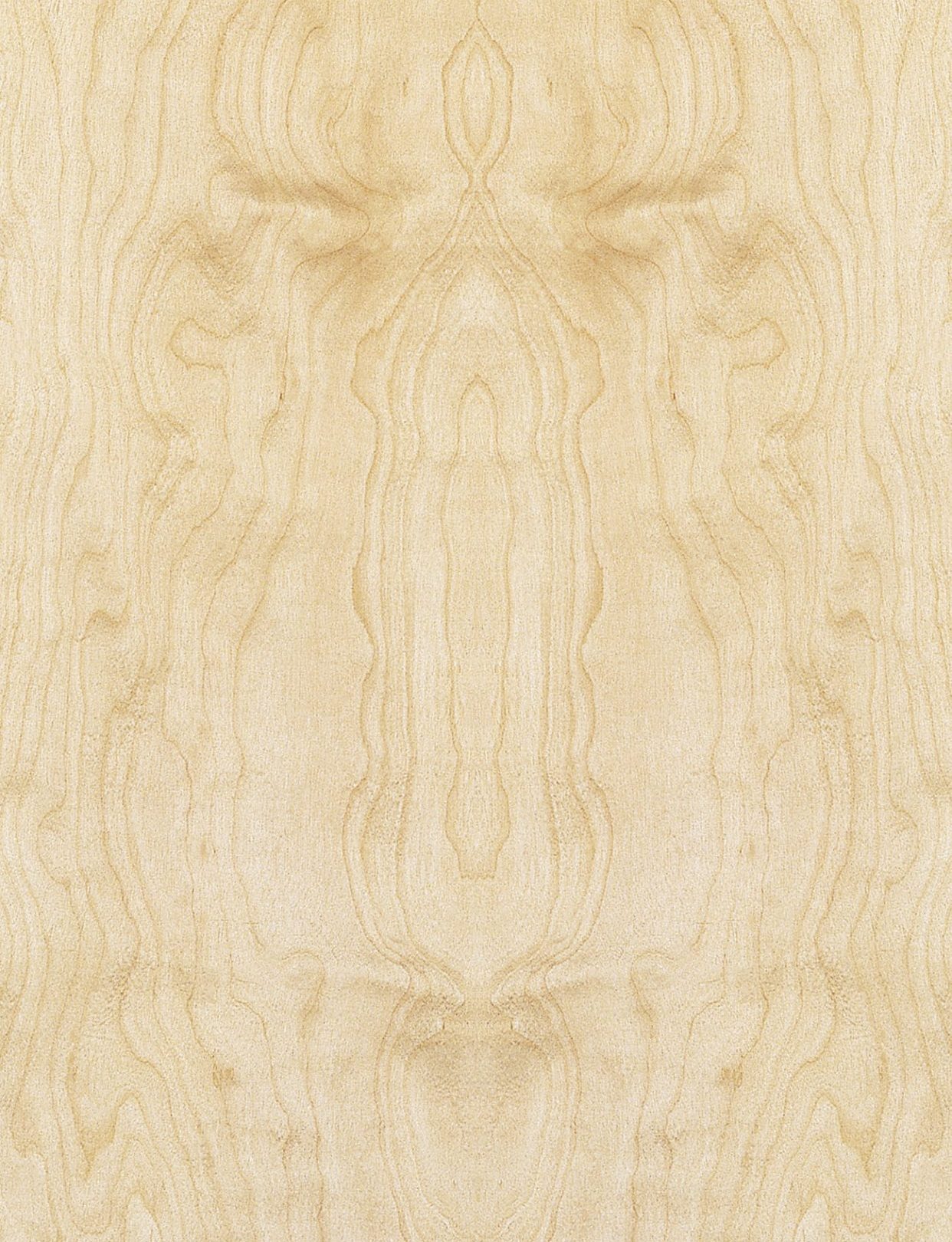
Ice Birch
Betula alba, Betula alleghaniensis

Trade Names
Ice Birch, Figured Birch
Origin
Approx. up the 65th parallel in Europe and Asia as well as in the Northeast of the United States and in southern Canada.
Range
The Ice Birch form can develop in the European Birch as well as in the American “Yellow Birch”. In Europe, this Birch is of economic significance for the veneer industry. It mostly occurs in Finland and in some regions of northern Russia. The latter are still relatively unknown as to their veneer economy. In the United States, the Figured “Yellow Birch” is found from Maine to Michigan and in the southern part of Canada from Quebec to Ontario.
Uses
In Europe, Ice Birch was a very popular wood for bedroom furniture in the fifties and sixties, with the demand having been covered by the European Birch. Today, Ice Birch is used for exclusive interior construction jobs and high quality furniture production. Due to its small dimensions, the European Ice Birch is almost always rotary-cut, whereas the American Ice Birch is always produced as sliced veneers.
Properties
Colour is yellowish-white which darkens extensively to a yellow colour under the influence of light. Ice Birch hardly ever develops the typical figure as seen in other species. Its particular form is more to be seen as a healthy and strong wood shifting during growth, resulting in this pattern resembling ames or ice seen under lighting. Highly decorative when processed and surface finished.
Machining
Can easily be worked with all tools without any problem. Planed surfaces turn out very smooth.
Seasoning
Drying needs to be done very carefully and slowly due to high tendency of checking and warping.
Finishing
No problem applying stains or polished surfaces.
Jointing
No difficulty to produce joints with glue. Screw and nail joints should be predrilled.

